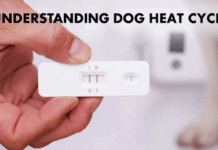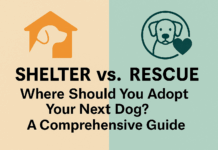Last Updated on November 16, 2023 by Dogs Vets
How to Afford Dog Care in 2023
As a dog owner, you will likely want to keep your dog as happy and healthy as possible and care for them as best as possible. However, it can be difficult to afford to provide your dog with top-quality care, especially as they get older.
If you are worried about affording all the care that your pet needs in 2023, read on for some top tips that might be able to help you.
Know How Much a Dog Costs
Before you take any further steps to manage your finances better when it comes to your pets, it is vital that you know how much your dog will cost you, both on a yearly basis and across their lifetime. This means that you should research or estimate how much a dog will cost per year and create a financial breakdown.
You can use this to gain a better idea of where you can save and what you need to set aside money for.
By knowing how much you will spend on your dog throughout their life, you might be able to make a better-informed decision when choosing a pet and will ensure that you can always afford the essentials that your animal needs.
Create a Pet Budget
To make sure that you can afford to look after your pet in 2023, you need to start off by creating a budget for your pet. This budget should include essentials such as food and grooming equipment, as well as non-essential items, such as toys and events that your pet might enjoy.
You should also take into account the initial cost of owning a pet, including buying them a bed and bedding.
By creating this budget, you will be able to ensure that you don’t spend endless amounts of money on your pet and that you still have enough money to pay your own bills and care for yourself and your family. This will enable you to be in control of your finances.
You should also return to this budget regularly and update it according to the latest cost of living situation.
Take Out Pet Insurance
If you are worried about being able to afford your pet’s medical bills, it is essential that you look into insurance options.
Although pet insurance is a few extra dollars each month that you might struggle to pay, these policies can prevent you from coming unstuck and having to drain your bank account if your pet falls ill.
The right insurance policy can give you compensation if you have to pay out an excessive amount on vet bills and can ensure that you don’t have to skip the care that your pet needs just because you don’t have enough money to pay for it.
However, some companies can be reluctant to pay out, so you should search for reviews and recommendations, and check their position on pre-existing conditions, as well as dental care.
Then, it is vital that you start looking for a good dog insurance policy as soon as you bring your pet home. You should also get a quote before you commit to a policy and compare the monthly fees for a few policies to find one that suits your budget.
Look After Your Pet’s Health
However, the best step that you can take to reduce your dog’s medical bills in 2023 is to care for your dog’s health and to take preventative measures that can stop your pet from developing serious and expensive conditions.
For instance, you should invest in high-quality food for them, give them the exercise opportunities that they need, and socialize with them as much as you can. You should also look out for hazards and help your pet to maintain a healthy weight.
It is also important to visit a vet as soon as your pet falls ill, as this can allow any issues to get diagnosed before they worsen and become more challenging to treat.
Get Help With Vet Bills
There are many schemes available for people from low-income households that can help you to pay for your pet’s vet care. Some of these are run by charities, and the type of help that you can access might depend on the resources that are available in your area.
However, this financial assistance can help to keep your pet with you and can ensure that they don’t suffer because you are unable to afford the treatment and specialist appointments that they need.
You can apply for many of these schemes online and might be able to find out more about them from your vet.
Look at Vet Subscription Plans
If you would struggle to pay for your dog’s medical care all in one go, you should consider looking at vet subscription plans.
These plans can allow you to pay for your dog’s routine care on a monthly basis and cover treatments such as vaccinations and preventative flea and tick care. This can spread out the cost of these essential treatments and can mean that the cost doesn’t come as a surprise to you.
If your vet does not offer a subscription plan and you are struggling to care for your dog’s vet care, or the treatment that they need is not routine, you should consider asking your vet whether you may be able to pay in instalments across a few months, rather than all at once.
Save on Essential Items
You should also consider looking at ways to save money on essential items for your pets. For instance, you might consider waiting until there are discounts on necessities such as food, or you might be able to make use of multi-buy offers to buy more for less.
You should also consider looking for second-hand equipment such as leashes, as well as buying flea and tick treatments online rather than from your veterinary clinic.
You might also decide to compare certain products and look for non-branded options whose price could be less daunting than the most popular options.
Fact Check
We strive to provide the latest valuable information for pet lovers with accuracy and fairness. If you would like to add to this post or advertise with us, don’t hesitate reach us. If you see something that doesn’t look right, contact us!

















